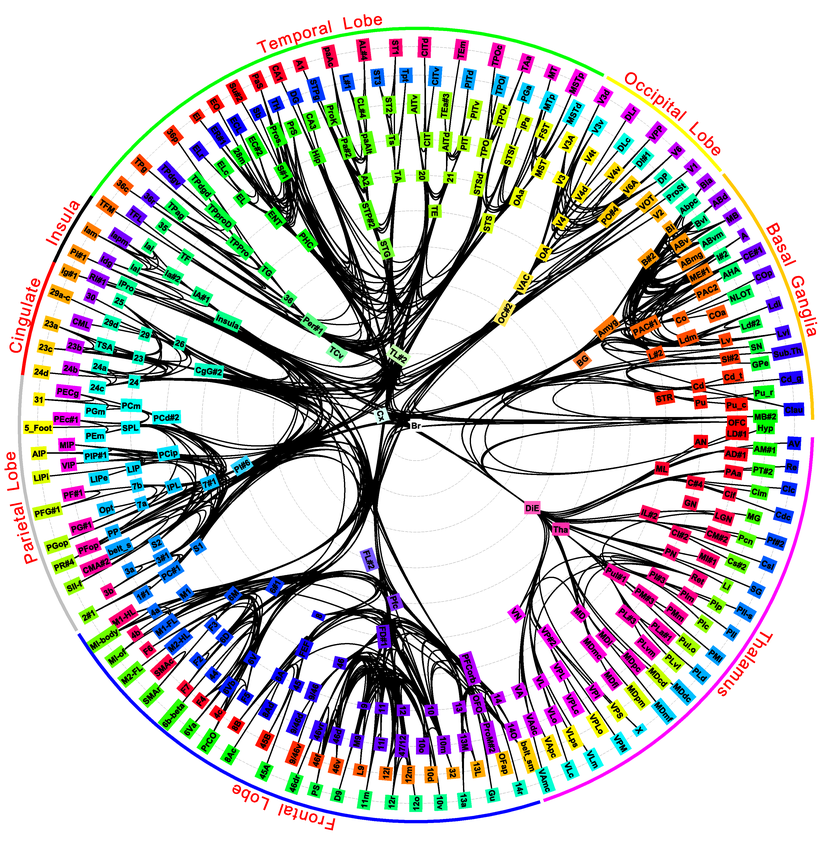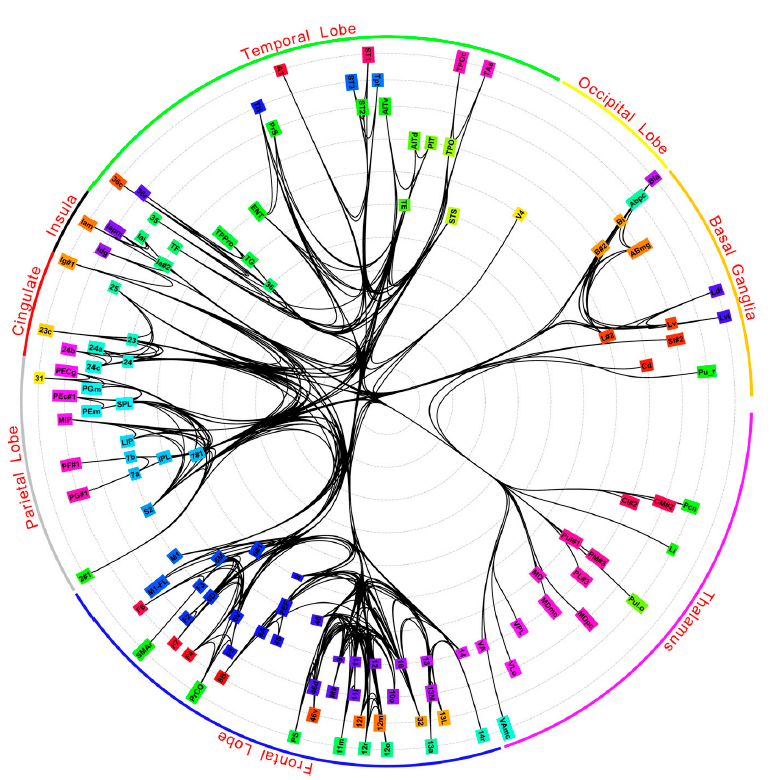The Proceedings of the National Academy of Sciences (PNAS) published Tuesday a landmark paper entitled “Network architecture of the long-distance pathways in the macaque brain” (an open-access paper) by Dharmendra S. Modha (IBM Almaden) and Raghavendra Singh (IBM Research-India) with major implications for reverse-engineering the brain and developing a network of cognitive-computing chips.
"The Mandala of the Mind": The long-distance network of the Macaque monkey brain, spanning the cortex, thalamus, and basal ganglia, showing 6,602 long-distance connections between 383 brain regions. (PNAS)
“We have successfully uncovered and mapped the most comprehensive long-distance network of the Macaque monkey brain, which is essential for understanding the brain’s behavior, complexity, dynamics and computation,” Dr. Modha says. “We can now gain unprecedented insight into how information travels and is processed across the brain.
“We have collated a comprehensive, consistent, concise, coherent, and colossal network spanning the entire brain and grounded in anatomical tracing studies that is a stepping stone to both fundamental and applied research in neuroscience and cognitive computing.”
The scientists focused on the long-distance network of 383 brain regions and 6,602 long-distance brain connections that travel through the brain’s white matter, which are like the “interstate highways” between far-flung brain regions, he explained, while short-distance gray matter connections (based on neurons) constitute “local roads” within a brain region and its sub-structures.
Their research builds upon a publicly available database called Collation of Connectivity data on the Macaque brain , which compiles anatomical tracing data from over 400 scientific reports from neuroanatomists published over the last half-century.
“We studied four times the number of brain regions and have compiled nearly three times the number of connections when compared to the largest previous endeavor,” he pointed out. “Our data may open up entirely new ways of analyzing, understanding, and, eventually, imitating the network architecture of the brain, which according to Marian C. Diamond and Arnold B. Scheibel is “the most complex mass of protoplasm on earth—perhaps even in our galaxy.”
The center of higher cognition and consciousness?

Core subnetwork (PNAS)
The brain network they found contains a “tightly integrated core that might be at the heart of higher cognition and even consciousness … and may be a key to the age-old question of how the mind arises from the brain.” The core spans parts of premotor cortex, prefrontal cortex, temporal lobe, parietal lobe, thalamus, basal ganglia, cingulate cortex, insula, and visual cortex.
Prefrontal cortex: integrator-distributor of information
By ranking brain regions (similar to how search engines rank web pages), they found evidence that the prefrontal cortex, while physically located in the front of the brain, is a functionally central part of the brain that might act as an integrator and distributor of information. Think of it as a switchboard.
As they stated in the PNAS paper, “The network opens the door to the application of large-scale network-theoretic analysis that has been so successful in understanding the Internet, metabolic networks, protein interaction networks, various social networks, and in searching the world-wide web. The network will be an indispensable foundation for clinical, systems, cognitive, and computational neurosciences as well as cognitive computing.”
The findings will also help them design the routing architecture for a network of cognitive computing chips, they suggest.
The research was sponsored by the Defense Advanced Research Projects Agency, Defense Sciences Office, Program: Systems of Neuromorphic Adaptive Plastic Scalable Electronics.
A detailed Powerpoint slide show with voice narration (60 slides, ~52 minutes, ~50 MB) is downloadable here.
[LINK]

0 comments:
Post a Comment